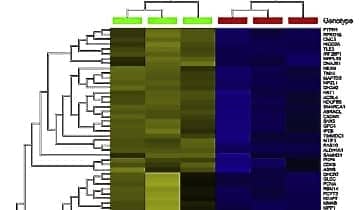To create more accurate and sensitive antibody tests, biologists conducted a study that isolated the coronavirus nucleoprotein in its pure form.
The SARS-CoV-2 nucleoprotein is the main protein in viral particles. It folds the RNA of the virus into a compact structure. This is needed to transfer the hereditary material to the “next generations” of virions before they are separated from the infected cell. COVID-19 patients usually develop antibodies to the SARS-CoV-2 nucleoprotein, even if the infection was asymptomatic.
But people inoculated with mRNA vaccines and adenovirus vaccines such as Sputnik V or ChAdOx1 (AstraZeneca) do not develop antibodies to the nucleoprotein. The reason is that these vaccines do not code nucleoprotein, but rather S-protein “spikes” that allow the virus to attach to the human cell and infect it. The immunity of people who had contracted the virus, unlike vaccinated people, encounters all the proteins of the virus and develops all forms of antibodies to nucleoprotein too.
“With nucleoprotein antibody tests, it is possible to know exactly whether a vaccinated person has been infected with SARS-CoV-2,” says Ivan I. Vorobiev, PhD, doctor of Biological Sciences, one of the authors of the study and head of the laboratory of Mammals Cells Bioengineering of the Research Center of Biotechnology RAS. “Tests for antibodies to the S-protein do not provide this clear information. Apparently, the omicron variant can easily infect vaccinated persons, but it rarely re-infects those who have already been infected and very rarely infects those who have been infected and vaccinated afterward. There are also commercial tests for antibodies to the SARS-CoV-2 virus nucleoprotein. Unfortunately, some of them give plenty of false positives, while others, with low sensitivity, give many false negatives.”
To create the more accurate antibody tests, it is necessary to isolate the pure form of protein to which the antibodies are specific. The test works because the protein finds “its” antibody and binds to it. In the case of a nucleoprotein, however, there are many obstacles for binding of antibodies.
Part of the protein’s surface is closed by bound RNA, and another part is inaccessible because nucleoproteins form huge supramolecular structures. Since the nucleoprotein “in the line of duty” binds to RNA, separating one from the other is a complicated process.
Scientists demonstrated that at least two different methods of directed RNA removal are required for obtaining SARS-CoV-2 nucleoprotein, completely free from any RNA admixtures. Such preparation helps to determine the presence of antibodies to SARS-CoV-2 with significantly higher sensitivity.
“The specificity of the test with the RNA-free antigen also increases for the N-terminal domain of the nucleoprotein, which is also used in immunoassays,” says Vorobiev. “Plasmids encoding the SARS-CoV-2 nucleoprotein and its N-terminal domain have been deposited in the Addgene repository and are available for free use by scientists. A complete procedure for obtaining the nucleoprotein with high sensitivity in immunoassays is given in the article and can be easily reproduced by test kit manufacturers.”
Featured image: (A) Map of the pHYP-NPC-10H plasmid. (B) SDS-PAGE analysis of the full—length NP expression. Induction with 1 mM IPTG. (C) SDS-PAGE analysis of the NP purification in the presence or absence of the RNase A. (D, E) IMAC chromatography traces for the NP purification in the presence or absence of RNase A treatment and 2 M NaCl solution wash. (F) Agarose gel analysis of purified proteins, ethidium bromide staining, double-strand DNA marker. Photo: Kolesov DE, Sinegubova MV, Safenkova IV, Vorobiev II, Orlova NA. 2022. Antigenic properties of the SARS-CoV-2 nucleoprotein are altered by the RNA admixture. PeerJ





